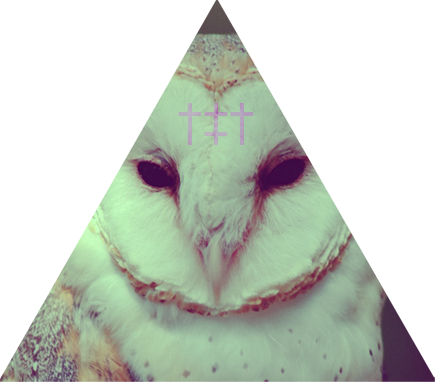
Bram E. Gieben (aka Texture) is the editor of the Edinburgh-based fiction/non-fiction website Weaponizer, and also co-founder of the net label Black Lantern Music. I asked him to write DM a primer on the genre “witch house”:
The Niallist (aka Niall O’Conghaile) asked me to write something about witch house, summing it up, providing a genre overview, and talking about some of the artists I’ve discovered over the last year or so. The problem is witch house is nothing like a traditional genre. It is not defined by a tempo, a style of production, a specific group of artists, a region or country or city, or any of the things one could use to pigeonhole, say, shoegaze, dubstep or hip-hop. Even the pool of influences from which it draws are so diverse as to stagger the mind of even the most ardent avant garde completist: witch house can (and does) sound like everything from experimental noise and drone to EBM and darkwave and aggrotech, from hip-hop to punk rock and black metal, often all at the same time.
Witch house is perhaps the first anti-genre, in that it has always actively resisted not just definition, but also detection. Much mockery has been made of artists spelling their band names with strange typographic symbols, but in the early days of witch house this had a specific intent: namely to create a ‘lexical darknet’ (to quote Warren Ellis, the comics writer and novelist whose blog posts led me to my first discoveries in the field), whereby fans had to use the specific symbols in the band names to locate their music online.
Witch house has incubated and mutated on free music sharing platforms such as Soundcloud and Bandcamp, and survives and breeds on private forums like www.witch-house.com, and on invite-only Facebook groups like Witchbook and Dior Nights, which use Facebook to run miniature secret societies and covens. These technologies (or services, however you want to define them) are core to the distribution of the music, but equally important have been the Tumblr and Vimeo platforms. The cut-and-paste ethos behind many witch house projects extends to their visuals, and the gifs, music videos and photo collages that populate artists’ feeds and channels are as much a part of the aesthetic of witch house as the music is.
The equal importance of visual and audio material helps us get closer to a definition of witch house: it is a mood or a feeling, the kind of atmosphere generated by the seminal Goblin’s soundtrack for ‘Suspiria,’ the creeping, schizophrenic suspense of the Laura Palmer mystery, or the Red Room at the heart of Twin Peaks, the final twenty minutes of The Wicker Man, or a basement rave in the house at the end of The Blair Witch Project. In repose, it generates an aura of ritual, darkness and suspense. In motion, it combines the glamour of fetish clubs and serial murder and hard drugs into an amoral dystopia of sound and vision.
Excited yet? You should be. Witch house is almost completely free from the constraints of mainstream hype - aside perhaps from the majestic witch pop of S4LEM, the mysterious feedback glyphs of WU LYF, and the luxurious electronic experimentation of Balam Acab, the three artists closest to crossing over into mainstream consciousness.
After the jump, the bands including Gummy Bear, Ritualz, Skeleton Kids, Fostercare, Gvcci Hvcci, Mater Suspiria Vision, oOoOO and many, many more.





